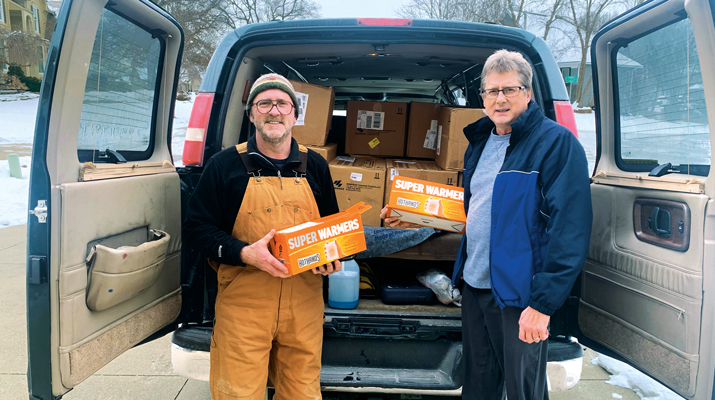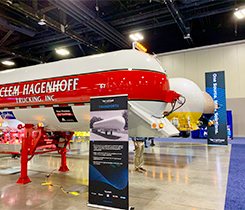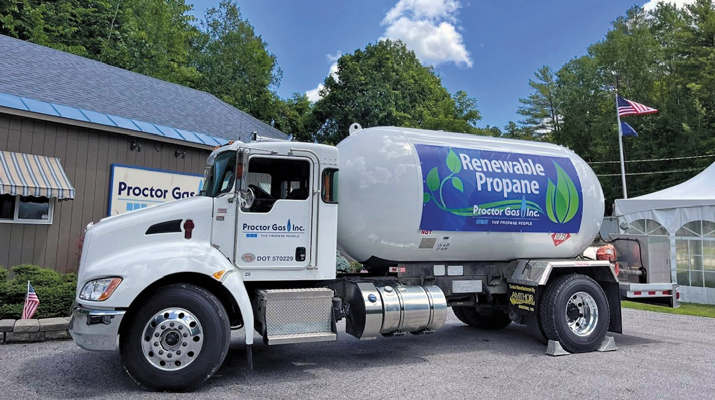Perfect pitch
Tank ownership is considered by many to be fundamental to doing business in the propane industry, whether the tanks are above or below ground.
Tanks are generally the propane marketer’s biggest asset. In fact, a recent industry study commissioned by the Propane Education & Research Council found that tanks constitute an average of 26 percent of a propane marketer’s total assets. Nothing else comes close — not the land (16 percent), buildings or equipment (each 11 percent) that marketers own.
To keep control of gas demand and avoid competing with other dealers purely on propane pricing, tank ownership is important to most propane retailers. If you own the tank, you can expect to fill it. Because burying tanks underground often multiplies the cost of each tank and installation, however, some dealers prefer to sell residential underground tanks and not to own and lease them out. While dealer ownership of the underground tank appears to be the most popular approach, a sampling of marketers across the country indicates it’s not the only one.
In Margate, Fla., for example, Propane USA installs underground tanks and leases them as small as 120 gallons, but offers 250-, 500- and 1,000-gallon tanks for most subterranean installations.
“We install more underground tanks than above-ground tanks,” says Steve Sterneck, general manager of Propane USA. “The customer likes the aesthetics.”
Propane USA customers generally choose larger underground tanks than the average 250-gallon above-ground residential tank. The company has not installed any underground tank larger than 1,000 gallons, but has put in as many as three or four together in one installation in a few places.
“We maintain the tank and regulators and gas line. That way we can maintain the quality of the installation,” explains Sterneck.
Gas plans offered to customers by Propane USA include discounted installation and maintenance fees. Sterneck stresses to customers that leasing is a good deal for them, drawing an analogy to auto leasing. “You can drive a much nicer car by leasing for the same dollars,” he observes.
All of Propane USA’s customers are on keep-full service. On the other hand, Green Bay Gas in Green Bay, Wis., only sells – never leases – underground tanks to its residential customers.
Ben Bonack, manager of Green Bay, says people with larger homes order underground tanks in Wisconsin. The underground tank Green Bay installs is generally 1,000-gallon water capacity, while residential customers with above-ground tanks usually
go with 500 gallons. Bonack says his customers look at the small price differential between installing the underground 500 and the 1,000, and usually opt for the larger tank.
Still, he reports that only about 2 percent of his residential customers choose the underground models. “I haven’t seen a significant increase in the past five years,” he says.
About 95 percent of Green Bay’s customers – both above and underground tanks – are on a keep-full basis. No metered tanks are offered.
Because the customer, not the propane retailer, owns the underground tank, there is the potential for switching to another propane supplier. Do underground tanks result in a loss of business?
“Not if you offer good service at a reasonable price,” Bonack declares.
Sunshine Propane in Port Halock, Wash., also offers underground models for purchase only. Pricing on the company’s Web site is $1,650 for a 250-gallon underground tank, $1,950 for a 500-gallon model, and $3,000 for a 1,000-gallon size.
Sunshine is operated jointly by an owner cooperative consisting of 10 members. Jo Yount, one of the owners, reports that the typical underground residential tank installed there is 500 gallon, which is also larger than the normal above-ground
residential tank. The company offers underground tank owners a discount on fuel because the larger tanks require fewer deliveries.
Customers who install underground tanks generally “can afford the money up front and want the price break,” she reports.
Sunshine makes deliveries whenever customers need at least 70 percent of their tank capacity. “Our gas price is based on volume at a given stop. The more delivered at the stop, the greater the discount,” Yount explains.
To build customer loyalty, Sunshine also gives underground tank owners a 5-cent-per-gallon price break on their gas if they sign up for keep-full rather than will-call service.
Yount reports that customers in her area also install underground tanks mostly for improved appearance. Operating in a marine environment, Sunshine does its own installations, but adds double paint over factory tank coatings and wraps underground tanks in a mesh to drain away groundwater.
Propane subsidiaries of some rural electric cooperatives that have come into the gas market recently also offer underground tanks. Some buy market share by offering financing deals and other financial incentives.
For instance, Boone Electric Cooperative in Paris, Mo., through its partnership with Consolidated Energy, sells underground tanks to residents under a lease-purchase option that finances purchases over several years.
Prism Propane in North Baltimore, Ohio, charges no tank rental on any of its tanks, above or below ground. All Prism customers are on automatic fill in this joint venture of an electric coop and Moulton Gas Service of Wapakoneta, Ohio. Prism offers customers the option of metered service so that customers only pay when they use their fuel.
In addition, Prism has capped its price to the customer at $1.169 per gallon (plus sales tax) through June 30, 2002.
















